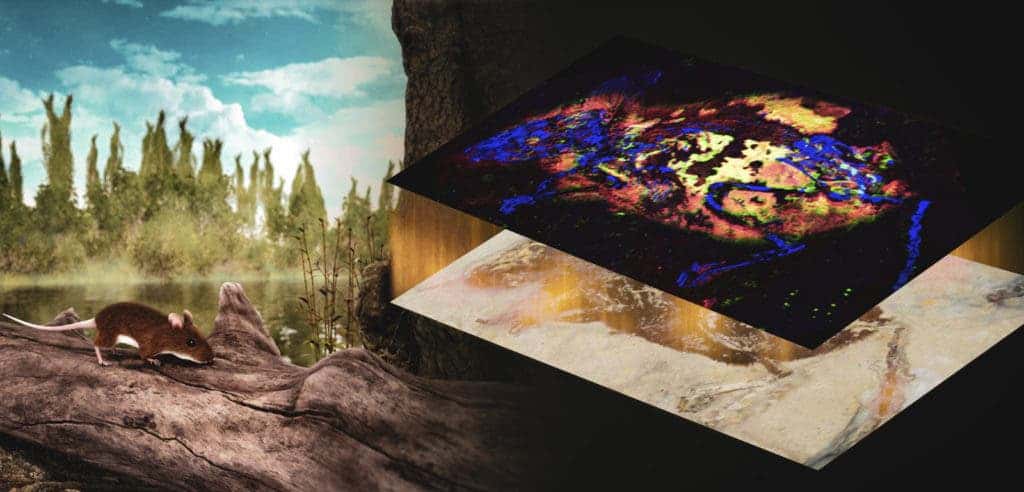Using advanced X-ray technology, an interdisciplinary team of researchers has, for the first time, identified red pigments in an ancient fossil. It belonged to a now-extinct 3-million-year-old mouse, called Apodemus atavus and nicknamed “mighty mouse”, which was found near the German village of Willershausen.

Researchers at the University of Manchester in the UK were amazed by how well preserved the fossil was, with most of the skeleton and soft tissue still present and easily recognizable. But, even under such fortunate conditions, it would have been impossible to resolve the biochemical information of the tissue without the help of high-powered X-ray tools, like the SLAC’s Stanford Synchrotron Radiation Lightsource and the Diamond Light Source in the UK.
“Life on Earth has littered the fossil record with a wealth of information that has only recently been accessible to science,” says Phil Manning, a professor at Manchester who co-led the study. “A suite of new imaging techniques can now be deployed, which permit us to peer deep into the chemical history of a fossil organism and the processes that preserved its tissues. Where once we saw simply minerals, now we gently unpick the ‘biochemical ghosts’ of long extinct species.”

The team of researchers, which included experts in paleontology, geochemistry, and X-ray spectroscopy, were able to detect trace metals in the pigments (melanin), revealing that the rodent’s fur was red. In mammals and other animals, there are two types of melanin, the brownish-black eumelanin, and the reddish pheomelanin. The authors even translated the spectral images into sound waves, showing that different frequencies are associated with different sounds.
“This study demonstrates that the spatial distribution of different forms of melanin residues in extinct organisms may be resolved nondestructively over large areas (dm2) even after 3 million years of degradation,” the researchers wrote.
In the future, the same technique could be used on many other fossils, revealing the stunning coloring of long-gone animals. It was only ten years ago that researchers identified black pigments in an ancient fossil. What’s more, coloring might offer new hints and clues that scientists are now missing when studying the evolution of certain extinct organisms.
“As you do research in a particular area, the scope of your techniques might evolve,” says Uwe Bergmann, co-author and a distinguished staff scientist at SLAC who led the development of the X-ray fluorescence imaging used in this research. “The hope is that you can develop a tool that will become part of the standard arsenal when something new is studied, and I believe the application to fossils is a good example.”
The findings appeared in the journal Nature Communications.


